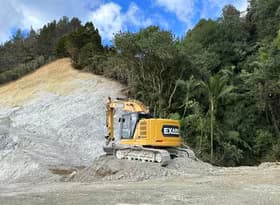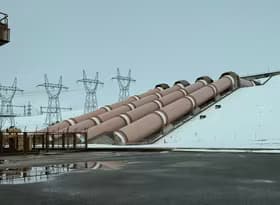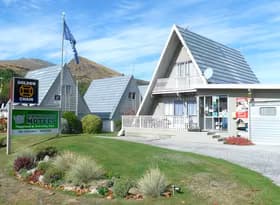
Regional inflation variations driven by housing costs
Inflation is moderating, which is encouraging news after the highest rise in prices in three decades after the COVID-19 pandemic and associated supply chain issues, emergency stimulus, and high demand. Although the national inflation rate is regularly analysed and discussed, regional price changes aren’t as often examined.
This analysis looks at the regional outcomes of inflation, and finds that provincial areas in New Zealand have faced higher inflation in recent years. Although many groups of items show similar pricing trends across the country, housing-related prices like rents and building costs have more variation and have driven the different regional inflation results.
Provincial areas still face higher inflation
Our analysis shows that provincial parts of New Zealand have experienced greater inflation than regions with major centres. The consumers price index for New Zealand at the end of 2023 was 20.6% higher than pre-pandemic levels seen in the December 2019 quarter. But at a broad region level, the results ranged from 18.9% for Wellington to 22.7% for the Rest of North Island (excluding Auckland and Wellington).
Peak inflation was higher for both Rest of North Island (7.9%pa) and Rest of South Island (ex Canterbury – 7.6%pa) than the national average of 7.3%pa.
More recently, inflation remains more intense in areas outside the major centres. Both Rest of North and South Islands have inflation rates of 5.0%pa or more, compared to the national rate moderating to 4.7% for the December 2023 quarter (see Chart 1).
Interestingly, alongside having the lowest cumulative inflation compared to pre-pandemic, Wellington region has the lowest peak inflation of 6.4%pa. Auckland and Canterbury have more closely tracked the national inflation rate, although both areas have seen swifter declines recently.
Housing-related costs key drivers of regional inflation
Of the eight inflation group-level indicators measured by Stats NZ at a regional level, the regional variation is limited for many. However, where there are notably larger increases in inflation relative to other areas, usually Rest of North and South Islands are the areas with these larger values (see Chart 2).
Food and alcohol and tobacco inflation by region track each other closely. More volatile groups such as clothing and footwear, transport, and recreation and culture, have more variation, but few discernible trends. Wellington recreation and culture1 inflation has been weaker than other areas since 2021, and Auckland and Wellington transport inflation has been less intense at the peak in 2022.
Health inflation has been considerably more volatile, with a notable spike for Rest of North Island in late 2022 and into 2023, and with Rest of South Island seeing a strong increase in prices at the end of 2023.
It is the housing and household utilities, and household contents and services, groups that have seen the largest variation in regional pricing trends. Relative to pre-pandemic, housing and household utilities inflation has ranged from 20.6% in Canterbury through to 31.2% in Rest of North Island – a nearly 11 percentage point difference. The variation for household contents and services is 8.2 percentage points, from 12.5% in Auckland and Wellington through to 20.6% in Rest of South Island.
Two major components of these two housing-related groups which have underlying regional data published by Stats NZ are the “purchase of housing” (which is actually the cost of building a house) and “actual rents for housing” (rent payments).
More expensive to build, and rent, in provincial NZ
Rental inflation by area shows substantial differences, both over time and in recent quarters. Rents in both Canterbury and Rest of South Island have accelerated from below 4%pa in 2021 to above 6%pa at the end of 2023 (see Chart 3).
Rest of North Island rents have been persistently growing at a rapid 6%pa+ rate since mid-2021, while Wellington region’s rental inflation has slowed back from 5%pa+ in 2021/22 to just 2.3%pa in December 2023. Auckland rents are picking up, to 3.3%pa in December 2023 – the fastest since mid-2016.
Building costs also show greater pricing pressure for construction in provincial New Zealand, as well as Auckland. National residential building cost inflation peaked at 18.3%pa in the March and June 2022 quarters, but rose as high as 21.7%pa in Rest of North Island, and 20.3%pa in Auckland (see Chart 4).
Wellington and Canterbury annual building cost inflation peaked much lower, at 13% and 14.1%pa respectively.
Overall, the cost of building a new house at the end of 2023 was 41% more expensive than pre-pandemic at a nationwide level. In the Rest of North Island, it costs just under 50% more, and in Auckland 46% more. For the Rest of South Island, the increase is nearly 38%. But building cost inflation in Wellington and Canterbury is substantially lower, at around 25-26% respectively over the period – around 60% of the national pace.
The differences in regional building costs are difficult to explain. Both Auckland and the Rest of North Island area have both seen large increases in building levels, and with demand for building rising swiftly, it is likely that demand outstripped supply and higher prices resulted. The building boost in Canterbury hasn’t been as large relative to pre-pandemic levels, meaning that supply and demand might have been more matched. But Wellington has also seen a considerable enough increase in both consents and estimated work put in place, which doesn’t seem to early explain why building cost inflation has not been intense in the area.
Our regional building cost analysis does highlight the regional effects of localised events, with the boost in construction costs in Canterbury after the Christchurch earthquakes clear to see. The Rest of South Island also saw high cost escalation as supply of building materials and labour across the South Island was drawn to Canterbury. But the demand need in Canterbury doesn’t appear to have spilled over to the rest of New Zealand, with building cost growth in the North Island not reacting the same way back in the 2010s.
2 Recreation and culture includes the following classes: AV and computing equipment, major recreational and culture equipment, other recreational equipment and supplies, R&C services, newspapers, books, and stationary, and accommodation services.




























